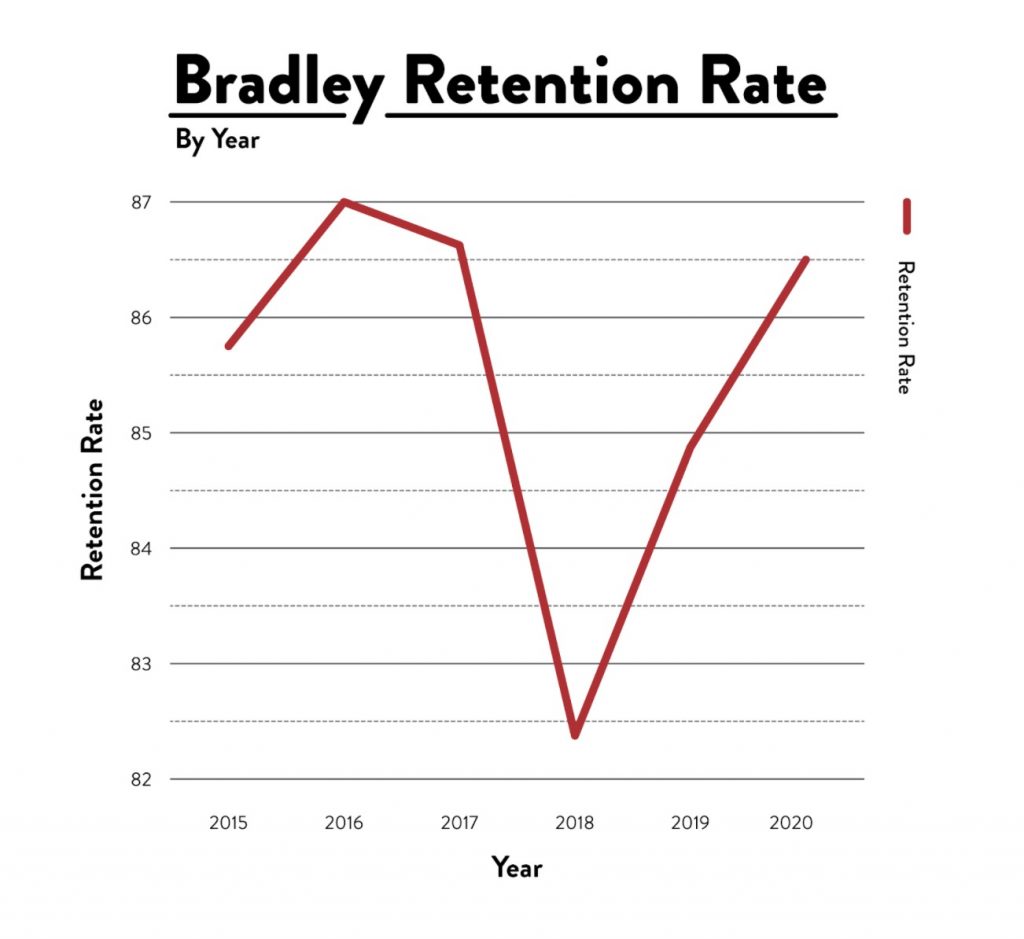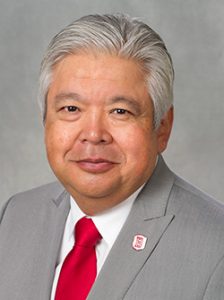Despite a year of uncertainty brought on by the pandemic, the Bradley retention rate and class of 2024 enrollment has remained strong — and even better than expected.
The fall 2020 retention rate, which describes the percentage of students from the previous fall who return to Bradley the following fall, is the highest it’s been in the last two years at 86.5 percent.

Vice president of student affairs Nathan Thomas said the university wasn’t expecting such an increase given the national trends of first-year students leaving college due to COVID-19.
“The retention rate was one of the real pleasant surprises, to be honest with you,” Thomas said. “We obviously knew back in April when we finally got back to registering … the numbers looked good, but like everyone, like the world, we were sitting around thinking, ‘What does this mean in a month or two months?’, and it just continually held over the summer, if not continued to show signs of life here.”
Thomas attributed the high retention rate during the pandemic to the multiple strategic actions taken by the university.
Student Engagement Team
The Bradley University’s Student Engagement Team was formed back in December of 2020 in response to the pandemic and was made up of representatives from each college.
The group’s goals are to reach out to students personally based on midterm grades, technical difficulties, extra-advising preparation and monitor overall student well-being.
“Faculty and staff are focused on many issues including how to support our colleagues on campus (now virtually) and increase the coping skills and quality experiences for everyone,” said Heljä Antola Crowe, leader of the team and executive director of the Center for Teaching.
Increased communication
Aside from additional student monitoring, Thomas said the university’s increased communication via student email proved beneficial.
In the spring when students were sent home, the university’s challenge was keeping students updated on the various changes, both related and unrelated to COVID-19.
These changes included a new university president, the implementation of the pass/fail grading system and plans for the fall 2020 semester.
Thomas said the key was always transparency with students, despite the local, state, federal and global unknowns.
“The contact with students was just more than it would have been in normal times,” Thomas said.
He noted this increased communication strategy has carried over to this fall and spring semester as well.
Students received multiple videos from university president Stephen Standifird to both introduce himself to students and communicate changes. Students also received regular emails communicating changes.
Sophomore nursing major Chloe Woodin said she felt the communication was frequent and helpful last spring when she was taking classes remotely.
“I thought Bradley did a good job explaining how the semester was expected to run,” Woodin said.
Leave of absence option
In the summer, the university sent an email notifying students that they could opt to take classes in-person or remotely in the fall. In addition to these, the university also included a “leave of absence” option.
With this option, students could leave the university without academic or financial repercussions with the intention of returning the following semester or year.
“Right now we have probably three to four times the number of students that would be on official leave of absence from the university than normal, too,” Thomas said.
However, the official number of students taking advantage of the option was not released.
Students taking a leave of absence still negatively impacts the retention rate, even if they intend on returning.
Taking a leave of absence has always been an option for students, but the university promoted it more in the summer to accommodate the various situations of students during the pandemic.
Financial aid
The CARES act was national legislation that provided money to college students who file the FAFSA intended to target lower-income students, who might be especially impacted by COVID-19.
In addition to distributing this to students, Thomas said the university re-evaluated its financial aid packaging.
This was done both across the board and on a case-by-case basis, often using the student’s Pell Grant reward as a basis.
“That may not be for every student, but there were additional considerations in terms of renewals and financial aid and other pieces which were all to the student’s benefit,” Thomas said.





Dr. Antola Crowe leads a different group that focuses on student, staff, and faculty well-being, not the Student Engagement Team (SET). SET was started in January of 2020 with a focus on increasing student success at Bradley. But yay! for increased enrollment – that is pretty impressive in the midst of a pandemic!